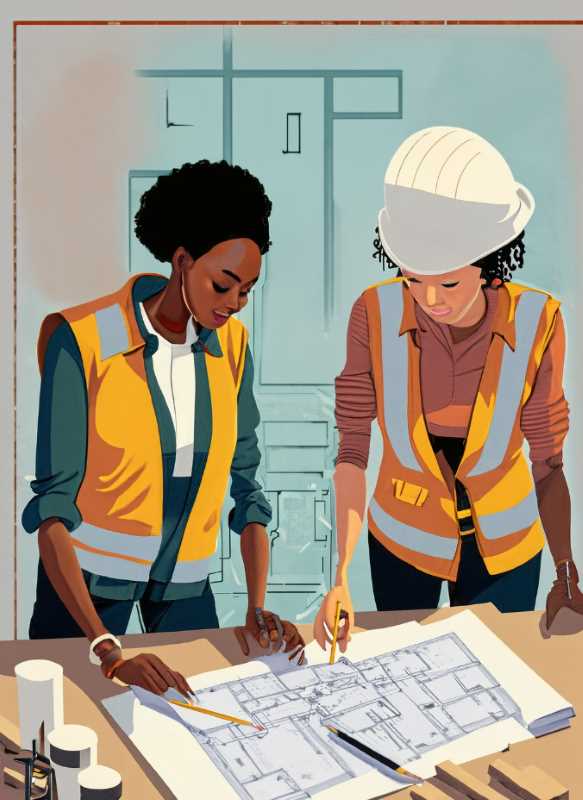How Women are Framing the Future of Construction
Recognizing the changing dynamics in the construction workforce, the UNAM has partnered with the Mexican School of Construction and Holcim to offer a professional training course that welcomes both men and women. The traditionally male-dominated industry is witnessing a significant shift.

On construction sites in Mexico, from the detailed work with trowels to precise measurements with levels and flexometers, an unexpected transformation is underway. Women are increasingly entering the traditionally male-dominated construction sector, not just in Mexico, but around the globe.
Professional Training
Recognizing the changing dynamics in the construction workforce, the UNAM (National Autonomous University of Mexico) through its Faculty of Architecture, has partnered with the Mexican School of Construction (EMC) and Holcim, a renowned construction company. Since 2018, they have been offering a professional training course titled “Reading and Interpretation of Plans.” The course, whose most recent module concludes on August 19, welcomes both men and women who are practicing as masons.
Jehú Aguilar Paniagua, the coordinator of these academic activities at the Faculty of Architecture, stresses that the entry profile for the courses is determined without any gender distinction. This inclusive approach reflects the shifting gender balance in construction fields, where the role of women has been increasingly prominent.
Women Masons
Though the presence of female masons in these courses may surprise some, their increasing participation in construction – the art and science of shaping our habitats – is undeniable. Since the course’s inception in 2015, there has been a steady rise in female enrollment, particularly in 2023, which saw eight women join the course. This trend, though modest, marks a significant shift in an industry traditionally dominated by men.
Additionally, within the Hybrid Course for Masonry Professionals titled “Energy Efficiency and Adaptive Comfort,” women have made their presence felt. This course, part of the CEELA Project, which focuses on building capacities for energy efficiency in Latin America, is seeing a growing interest from female professionals.
For many masons, the craft is often a family legacy, passed down from generation to generation. Aguilar Paniagua notes that while many inherit the trade, others without formal credentials find these training programs an invaluable opportunity to professionalize their skills.
Patricia Cervantes Andrade, a 56-year-old participant, is emblematic of this new wave. Following the devastating earthquake of September 19, 2017, she transitioned full-time into construction. The course at UNAM has equipped her with deeper technical understanding, enhancing her skills in structural elements of buildings. She passionately shares, “The course has taught me so much. My family is amazed, and some even jest that I should have pursued architecture.”

Gender Disparity
However, despite these promising stories, the disparity in the sector remains stark. As of the fourth quarter of 2022, of the 3.1 million masons in Mexico, a staggering 99.2% are men, with women making up just 0.8%. Although this is an improvement from 2013, where women accounted for only 0.4%, the gender gap is still significant.
Globally, this gender disparity exists in various countries. For instance, in Spain, by the end of 2018, out of the 106,400 individuals working in construction, the majority were male. However, countries like Brazil and Argentina are witnessing an uptick in female participation, at 4-5% of the workforce by 2021.
Aguilar Paniagua points out that a construction site requires more than just brute force; it demands specialization and training, opening up avenues for women to contribute meaningfully.
Conclusion
The rise in women entering the construction industry is not just a testament to breaking gender barriers but also highlights the industry's evolving needs. With specialized training and an inclusive approach, the future of construction can be as diverse as the structures it builds. The journey may be in its early stages, but every beam, castle, and slab laid by a woman mason is a step towards a more inclusive and equal world.




